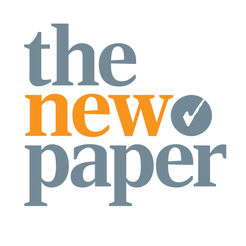Archive for February 2021
The Role of Competition Policy in Hi-Tech Markets (26 February)
Following the success of the first webinar organized within the framework of the IEB’s annual course on competiiton law, below is the program for this year’s second webinar, which will take place on Friday (26 February). Once again, we will be fortunate to hear from phenomenal speakers.
This webinar will take place via Teams and under Chatham House Rules. For further information and registrations, please contact competencia@ieb.es
16:30- 17:45 CET: Competition law in high tech markets in the EU and Spain
Nicholas Banasevic. Head of Unit, DG COMP, European Commission
José María Jiménez Laiglesia. Partner, Latham & Watkins
Ainhoa Veiga. Partner, Araoz y Rueda
Moderator: Milan Kristof. Référendaire, Court of Justice of the European Union
18:00-19:15 CET: The proposed EU Digital Markets Act and recent developments in the US
Nicholas Banasevic. Head of Unit, DG COMP, European Commission
Oliver Bethell, Director. Competition EMA, Google
Renata Hesse. Partner, Sullivan & Cromwell
Moderator: Lewis Crofts. Editor In Chief, MLex
NEW PAPER | The Draft Digital Markets Act: a legal and institutional analysis

I have just uploaded on ssrn (see here), a paper devoted to the Draft Digital Markets Act. I thought it was the most effective way to share my thoughts on it (including with my students) and to start a conversation about regulatory reform. Needless to say, your comments would be most welcome.
The first goal of the paper is to provide an overview of the Draft DMA and to compare it with EU competition law. A cursory overview of the proposal shows that it is different in several respects from Articles 101 and 102 TFEU. The case-by-case, context-specific evaluation that is characteristic of EU competition law would be replaced by a regime setting out a number of obligations imposed on firms categorised as gatekeepers. The Draft DMA places gatekeepers in a position that is comparable to that in which undertakings are following a finding of infringement under EU competition law.
I thought it would also be a good idea to compare the Draft DMA and the EU telecoms regime, if only because the latter is less well-known. I note in the paper that they are more different than they seem. The EU telecoms regime was conceived as a temporary instrument that would create the conditions in which electronic communications markets would be subject to competition law alone. What is more, it is expressly biased against intervention: national authorities would have to show that intervention would be necessary to promote effective competition in a market that is structurally unsuited for it.
The Draft DMA, by contrast, is not conceived as a temporary tool. It is not biased, either, against intervention. The most crucial difference between the two regimes, in any event, is the allocation of the burden of intervention. In the EU telecoms regime, it is for authorities to show that intervention is necessary and proportionate; the Draft DMA, on the other hand, places the burden upon the firm, which has to define the way in which it intends to comply with the obligations set out in Article 5 and (in particular) 6.
Several consequences follow from these choices. First, the Commission would enjoy substantial leeway to define the scope of the regime and the obligations to which firms are subject. The Draft DMA is based on the premise that the legal concepts used in it are autonomous from those developed in competition law over the years. As a result, it is not immediately obvious to see how administrative action would be effectively constrained and, if so, where the constraints would originate. Suffice it to take a look at the definition of gatekeeper under Article 3(1) of the proposed regime.
The final question relates to judicial review. In principle, there should be little doubt that the categorisation of a firm as a gatekeeper or the definition of the proactive obligations set out in Article 6 would be subject to scrutiny by the EU courts. This said, the design of the Draft DMA raises three fascinating issues. In the first place, the proposed legislation appears to be crafted in a way that disincentivises litigation, thereby suggesting that challenges would be less frequent than under EU competition law or the EU telecoms regime. In the second place, one could argue that meaningful constraints to administrative action follow from the right to effective judicial review. An additional (no less fascinating) issue is whether, as a matter of law, the objectives of fairness and contestability can be defined independently of primary law (and the system of undistorted competition that is a part thereof).
There is much to discuss about this major landmark and, as I said above, your input would be much appreciated. Hopefully we will find ways to share ideas about this and other major developments.
A CHALLENGE FOR THE COMPETITION COMMUNITY

We tried to put an end to the 2020 nightmare with a bit of humor, and with an award in memory of someone we lost. Chillin’Competition now wants to follow up with a bit of hope, and with a challenge.
We have often claimed that the competition community is special, and that the people in it are special too (mostly in a good way ;-)). We would now like to prove this. When we ran our meme contest, Isabelle de Silva (President of the French Competition Authority) suggested that we should again use the best memes to produce mugs. This gave us the idea to refocus a light hearted contest – and actually to leverage whatever reach this blog may have – towards supporting other much more serious, important and worthy initiatives, like KickCancer.
KickCancer is a public interest foundation devoted to combatting childhood cancer. KickCancer finances these innovative research projects aimed at understanding and curing paediatric cancer. Their cause could not be more important, or more fitting given the various extraordinary colleagues we sadly lost to cancer this past year. KickCancer is also an organization that is doing its best to turn an adverse event into a force for change (which in a way symbolizes what we want to get out of this pandemic too). It is an organization that finances projects with a European scope. It is an organization that approaches the most serious possible cause with humour. And since no organization is perfect, this one is largely run by lawyers 😉
Chillin’Competition has partnered with KickCancer to sell customized mugs featuring the winners of our meme contest, as selected by our devoted jurors (Foo Yun-Chee, Lewis Crofts, Javier Espinoza, Thibault Larger and Aoife White).
YOU CAN NOW BUY THE WINNING MEME MUGS HERE
All funds will go directly to KickCancer, and the (evident) overprice will be devoted to financing paediatric cancer research.
We would encourage you buy mugs for your colleagues, employees, clients, students, friends or for yourselves. It will cost you little, and it would help a lot. To facilitate logistics, we would also encourage you to collude, make a joint purchase and set a single delivery point for various mugs (shipping costs are free if you buy more than 10). You will be able to buy these mugs until 19 March.
The mugs are obviously nothing but an excuse. You can contribute to KickCancer in any way you can, also through direct donations (which will get you a tax deduction instead of a mug). You can do that in less time than it would take you to read one of our posts, for less than the cost of a takeaway meal (or for a very small fraction of a billable hour), and it will have a much more positive impact than either of those 😉
It would be nice to demonstrate that the competition community can beat all others not only in numbers of conferences, webinars and awards per capita, but also at joining forces in support of something that truly matters.
NEW PAPER | Territorial restrictions in EU competition law: from Consten-Grundig to Ping and Pay-TV

I have just uploaded on ssrn (see here) a paper on Territorial restrictions in EU competition law. I am particularly proud that the piece will be coming out in the proceedings of last year’s GCLC conference, devoted to vertical restraints, and edited by Adina Claici and Denis Waelbroeck.
I wrote on vertical restraints and market integration a few years ago. This paper was an excellent opportunity to revisit some themes in light of the growing case law and administrative practice. One of the themes was inspired by the Ping case (which explains a part of the pic above).
When market integration is at stake, the analysis of restrictions changes. It shifts from the ‘precise purpose‘ of the practice to focus on the means through which the aims are achieved. As a result, conduct that would otherwise be unproblematic is deemed prima facie unlawful insofar as it goes against the market integration objective.
The Ping case shows that courts and authorities may struggle with this methodological shift. In the case, the CMA, the CAT and the Court of Appeal all reached the right outcome: the online sales ban was restrictive by object. However, they all struggled to justify why, and they also struggled to reconcile the outcome with cases such as Cartes Bancaires or Budapest Bank. All those difficulties could have been easily avoided by simply pointing to market integration, and the fact that online sales bans hinder cross-border trade and are problematic for that very reason.
It is also clear since Murphy that the parties to an agreement that is in principle restrictive by object can provide evidence showing that it is incapable of having anticompetitive effects in a specific economic and legal context. However, there is precious little guidance about the application of this principle.
One can reasonably conclude, in light of Generics, that agreements limiting cross-border trade are incapable of restricting competition where there are ‘insurmountable barriers’ to such cross-border trade. This could be the case, in particular, where there are intellectual property rights involved. If a right holder or a licensee can validly invoke a right to prevent the flow of goods or services across borders, it is difficult to see how there could be a restriction.
The Commission seems to take a different view. I have read with particular interest the (relatively recent) Character Merchandise decision (which explains the other half of the pic above). Intriguingly, the Commission argues that agreements that limit cross-border trade are restrictive by object irrespective of whether the intellectual property rights are exhausted. It is not clear to me how this position can be squared with a long saga of cases, including Generics, Micro Leader and Coditel II. I would very much welcome your thoughts on it.
This Character Merchandise case is also interesting for another reason. The case involved non-exclusive distribution rights. The Commission argued that, in that context, active sales restrictions are restrictive by object (implying that they are only acceptable in the context of an exclusive distribution agreement). The decision does not refer to any judgment in support for this position. In fact, my understanding of both Societe Technique Miniere and Nungesser has always been that active sales restrictions are not restrictive by object. Again, it would be wonderful to hear your thoughts on this point, too.
I look forward to your comments!
